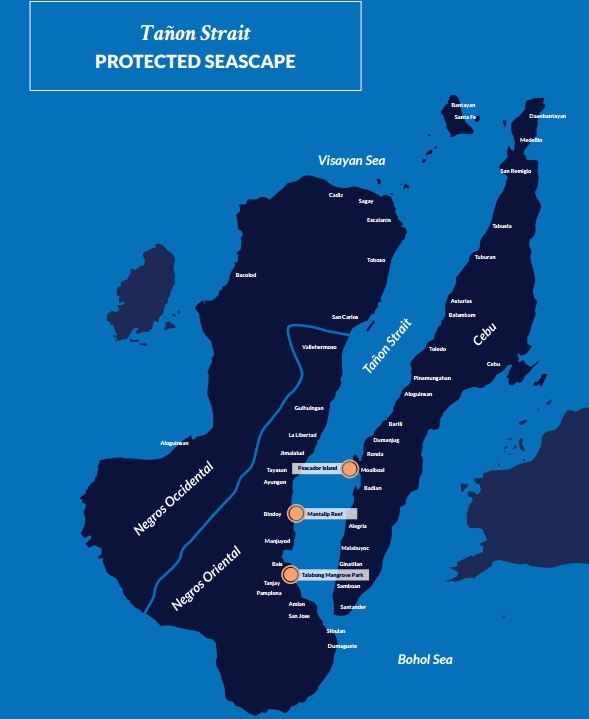Cebu Daily News photo editor Tonee Despojo spent five days traveling to parts of Cebu and Negros islands to capture scenes of life in coastal villages and the marine bounty of the Tañon Strait.

The sea is part of a narrow passage of water between Cebu and Negros Islands called the Tañon Strait.
It’s the largest marine protected area in the country with an area of three times that of the Tubbataha National Park at 5,182 square kilometers.
The strait provides livelihood for coastal communities in the 42 towns and cities surrounding the coast.

Small-scale fishermen go home with a meager 2 kilos in their nets a day.
Their biggest threat comes from commercial fishing operators who use destructive fishing methods, and problems of overfishing, and pollution.
At night when commercial fishing vessels dock at the shore of Madridejos town in Bantayan island, children stand close by with nets to retrieve discarded, unwanted catch of big operators.
Commercial fishing is prohibited in Tañon Strait.
Enforcing the ban remains a big challenge for local government units, especially towns that lack resources and political will to run after big-time operators.

Sometimes tomatoes, spring onions and ‘espada’ chilli peppers are added to bring out its flavor.

In 2013, the Bohol-Cebu earthquake damaged most of the corals.
But a recent visit, showed the corals are showing signs of recovery.
The Tañon Strait is part of the Coral Triangle, a region with the highest diversity of reef corals in the world. The Philippines has almost 500 species of corals. 
A sardine run is a common sight off Pescador island in Moalboal town, western Cebu. This attracts their predators – tuna, mackerel and sharks – giving fisherfolk a variety of fish to catch.
As a conservation measure, the town has designated areas for fishing. Only nets, and hook-and-line fishing are allowed.

The Tañon Strait hosts the Talabong Mangrove forest and bird sanctuary in Bais City, about 45 kilometers north of Dumaguete.
Mangroves are a nursery and spawning ground for fish, an important part of the marine eco-system.
They also serve as a barrier between the sea and land, protecting coastal villages from a storm surge.
Until 2009, residents of Bojo River in Aloguinsan town, southwest Cebu were cutting down mangroves for charcoal and using destructive fishing.
Today, its a complete turnaround. Fishermen guide visitors on boat tours and protect marine life and the river.
The Bojo river is an 1.6-kilometer estuary that opens out to the open sea in in the Tañon Strait.
The Department of Environment and Natural Resources (DENR) has identified 61 species of birds, 96 species of plants and 22 species of mangroves.

Wives of the fisherfolks have their own roles in the eco-tourism program of the Aloguinsan municipal government.

Other endangered marine animals have been sighted there, including the “dugong” or sea cow and the chambered nautilus.

They place their catch in a pail with ice to preserve the fish till they get to shore.

But the small sizes of fish sold in the market are itself a sign of overfishing.
The fish are dried under the sun next to the fishermen’s cottages by the sea.


The unspoiled beachfront attracts tourists who hire a motorized boat to spend a day in the uninhabited island.

But the sea forest is also a good place to swim as the branches of the mangroves provide shelter against the summer heat in Bindoy town, Negros Oriental.

Tañon Strait map (Grabbed from Oceana)
Disclaimer: The comments uploaded on this site do not necessarily represent or reflect the views of management and owner of Cebudailynews. We reserve the right to exclude comments that we deem to be inconsistent with our editorial standards.


